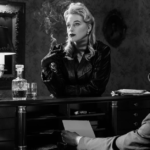What Year Does Dirty Dancing Take Place? Unraveling the Timeframe of a Classic Film
What Year Does Dirty Dancing Take Place? Unraveling the Timeframe of a Classic Film
A Classic Film that Transcends Time
Dirty Dancing, a beloved film that has captured the hearts of millions, continues to be a favorite among audiences decades after its release. Set in a summer resort in the Catskill Mountains, the film tells the story of Frances “Baby” Houseman and her life-changing experience at Kellerman’s resort. While the film’s timeless appeal is evident, many fans have wondered about the specific year in which the story takes place.
Setting the Scene: The Timeless Charm of the 1960s
Dirty Dancing is primarily set in the early 1960s, a period characterized by significant cultural shifts and changing social dynamics. The film expertly captures the essence of this era, depicting the contrast between the rigid societal norms of the time and the liberation and rebellion that was emerging.
A Historical Context: The Impact of the Civil Rights Movement and Beatlemania
The early 1960s were a time of great change and upheaval in the United States. The Civil Rights Movement was gaining momentum, challenging racial segregation and discrimination. At the same time, the British Invasion led by The Beatles brought new musical styles and influences to American shores, revolutionizing popular culture.
The Summer of 1963: The Specific Timeframe of Dirty Dancing
Although Dirty Dancing is set in the early 1960s, the film’s narrative is focused on the summer of 1963. This particular year holds significance as it marks the beginning of a profound shift in American society.
The Coming of Age: Baby’s Journey of Self-Discovery
Dirty Dancing tells the coming-of-age story of Baby Houseman, portrayed by Jennifer Grey. Over the course of one transformative summer, Baby discovers her own voice, challenges societal expectations, and learns the power of self-expression through dance.
Memorable Soundtrack: Iconic Songs that Define the Era
One of the defining elements of Dirty Dancing is its unforgettable soundtrack. Packed with hits from the early 1960s, the film features songs like “Be My Baby” by The Ronettes and “(I’ve Had) The Time of My Life” by Bill Medley and Jennifer Warnes. These songs transport viewers back to the era and evoke a sense of nostalgia.
The Enduring Legacy of Dirty Dancing
Since its release in 1987, Dirty Dancing has become a cultural phenomenon that continues to captivate audiences of all ages. The film’s timeless themes of love, self-discovery, and breaking free from constraints resonate with viewers, transcending the specific timeframe in which it is set.
A Film for Every Generation
While Dirty Dancing takes place in the summer of 1963, its timeless appeal and universal themes ensure that it remains relevant and engaging for viewers today. Whether you are watching the film for the first time or revisiting it for the umpteenth time, Dirty Dancing will continue to transport you back to a moment in time when love, music, and dance had the power to change lives.
Celebrating the Magic of Dirty Dancing
Dirty Dancing is more than just a film – it is a cultural touchstone that has left an indelible mark on popular culture. So, grab your dancing shoes and prepare to be swept off your feet into the world of Dirty Dancing, where love knows no boundaries and the music never stops.
FAQs
1. What year does Dirty Dancing take place?
Dirty Dancing takes place in the summer of 1963.
2. Is the time period of Dirty Dancing historically accurate?
While the movie is set in 1963, it is important to note that certain aspects of the storyline and visuals may not be historically accurate.
3. Why did the filmmakers choose the year 1963 for the setting?
The choice of 1963 was made to capture the spirit of a specific era in America’s history, just before the cultural shift brought on by the assassination of President John F. Kennedy and the onset of the 1960s counterculture.
4. How does the time period contribute to the plot of the film?
The time period of 1963 helps establish the societal norms and expectations that the characters must navigate throughout the story. It adds a layer of tension and provides context for the conflicts portrayed.
5. Are there any specific historical events referenced in Dirty Dancing?
No, the film does not directly reference any specific historical events, although it alludes to the changing social landscape of the early 1960s.
6. Does the film accurately depict the fashion and music of the 1960s?
While Dirty Dancing captures the essence of 1960s fashion and music, it may take some artistic liberties to enhance the storytelling and make it visually appealing for the audience.
7. How does Dirty Dancing portray social and cultural dynamics of the early 1960s?
The film portrays the strict social divide between the staff and guests at the resort, along with the contrasting values and expectations placed on women during that time period. It also touches on racial segregation and class differences, although not extensively.
8. Are there any technologies or modern conveniences that are missing from the film?
Yes, certain technological advancements that became popular in the 1960s, such as personal computers and smartphones, are absent from the film as they had not yet been developed. Dirty Dancing depicts a simpler time before the digital age.
9. How does the film’s setting in the early 1960s influence the characters?
The time period influences the characters’ behavior, choices, and the challenges they face. It sets the stage for the characters’ development, as they grapple with societal expectations and the desire for personal freedom.
10. Is the time period of Dirty Dancing crucial to understanding the film?
While the time period adds depth to the storytelling and provides a unique backdrop, the central themes and characters’ journeys in Dirty Dancing can still resonate with audiences regardless of their familiarity with the early 1960s.




































